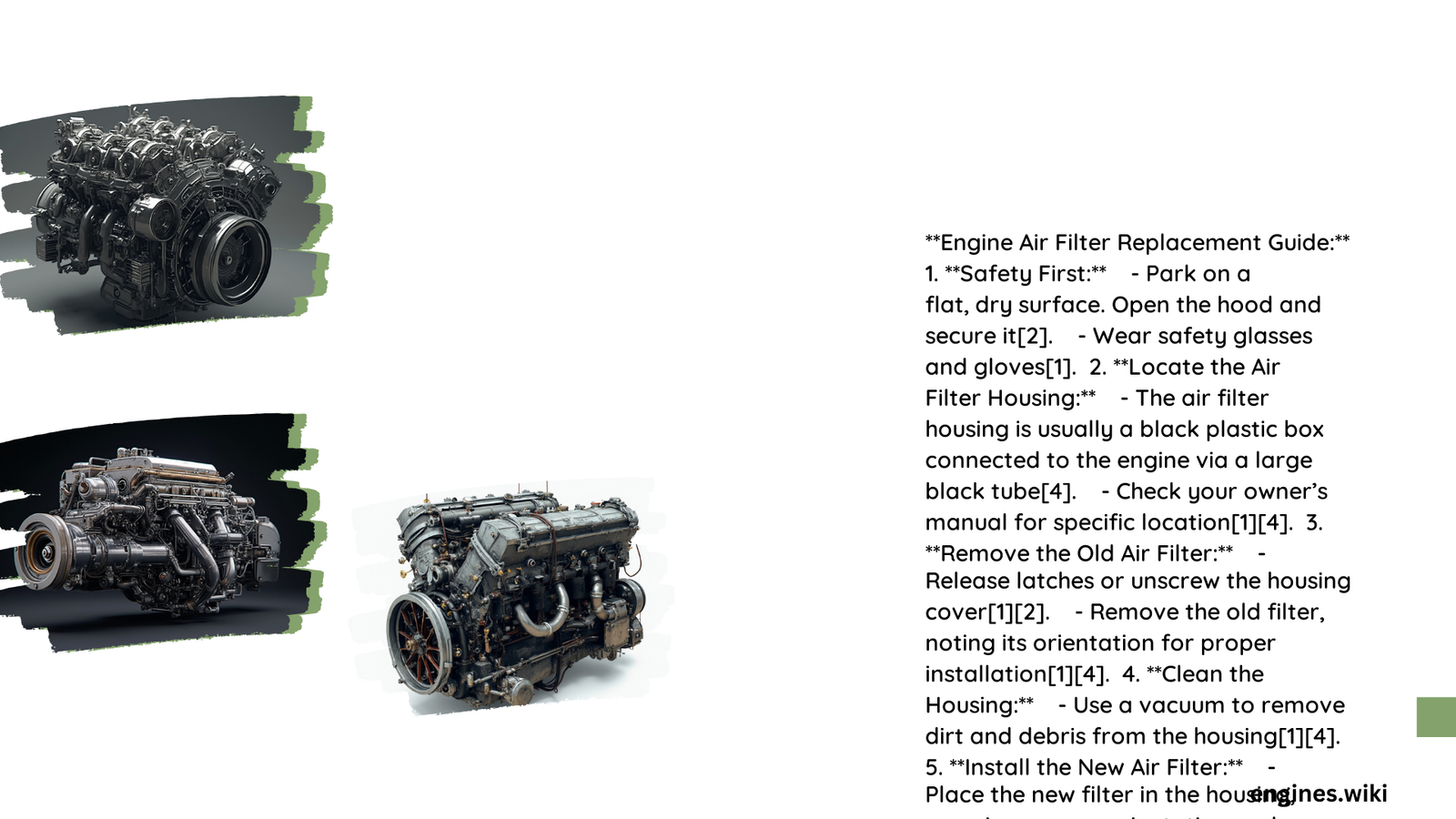Maintaining your vehicle’s engine air filter is crucial for optimal performance and fuel efficiency. This comprehensive engine air filter replacement guide provides detailed insights into identifying, removing, and installing the right air filter, ensuring your vehicle runs smoothly and efficiently. Whether you’re a novice or an experienced car enthusiast, this guide will walk you through every critical step with precision and clarity.
Why Replace Your Engine Air Filter?
What Happens When Air Filters Get Dirty?
Air filters trap dust, debris, and contaminants before they enter your engine. Over time, these filters become clogged, leading to:
- Reduced Engine Performance
- Decreased Fuel Efficiency
- Potential Engine Damage
Performance Impact Table
| Filter Condition | Fuel Efficiency | Engine Performance | Replacement Interval |
|---|---|---|---|
| Clean | Optimal | Excellent | 12,000-15,000 miles |
| Moderately Dirty | 10-15% Reduction | Slight Decrease | Immediate Replacement |
| Severely Clogged | 20% Reduction | Significant Drop | Urgent Replacement |
Step-by-Step Replacement Process

Where to Find the Air Filter?
Locating the air filter housing varies by vehicle model but typically involves:
- Check near the engine’s top
- Look for a rectangular black box
- Consult vehicle’s owner manual for precise location
What Tools Do You Need?
Minimal tools required:
– Safety gloves
– Safety glasses
– Screwdriver (optional)
– New air filter
– Vacuum cleaner (optional)
How to Remove the Old Filter?
Preparation Steps
- Cool Engine: Wait until engine temperature is normal
- Secure Vehicle: Park on flat surface
- Open Hood: Ensure proper hood support
Removal Technique
- Unlock housing clips
- Remove housing cover
- Extract old filter carefully
- Clean housing interior
- Inspect for any damage
How to Install New Filter?
Installation Checklist
- Match new filter’s orientation
- Ensure proper seating
- Check for no gaps or bends
- Secure housing clips
- Verify tight seal
Maintenance Frequency
When Should You Replace?
Replacement depends on:
– Driving conditions
– Vehicle type
– Manufacturer recommendations
Typical Intervals:
– Normal Conditions: Every 12,000-15,000 miles
– Dusty Environments: Every 9,000-12,000 miles
– Urban Driving: Potentially more frequent
Cost Considerations
Replacement Expenses
- Filter Cost: $15 – $50
- DIY Replacement: Free
- Professional Service: $30 – $80
Common Mistakes to Avoid
What Not to Do
- Don’t force filter into housing
- Avoid touching filter’s surface
- Never install a damaged filter
- Don’t skip cleaning housing
- Prevent dust from entering during replacement
Pro Tips for Longevity
Maintenance Recommendations
- Inspect during oil changes
- Use high-quality filters
- Consider environment-specific filters
- Track replacement history
- Monitor engine performance
Troubleshooting
Signs of Needed Replacement
- Reduced acceleration
- Unusual engine sounds
- Decreased fuel economy
- Check engine light
- Visible dirt/debris on filter
Conclusion
Regular air filter maintenance is a simple yet critical aspect of vehicle care. By following this engine air filter replacement guide, you’ll ensure optimal engine performance, fuel efficiency, and longevity.
